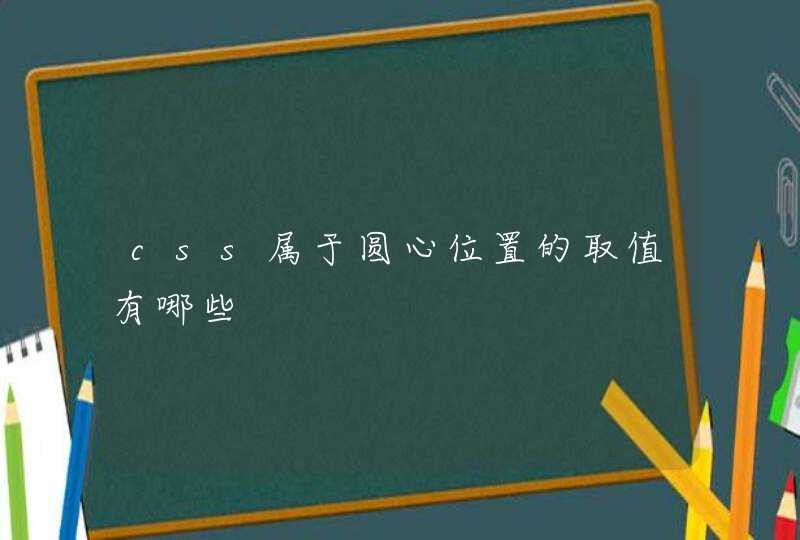
Navy SEAL teams and structure
SEALs carrying MP5 submachine guns
SEALs carrying MP5 submachine guns
SEAL teams are organized into two groups: Naval Special Warfare Group One (West Coast), and Naval Special Warfare Group Two (East Coast), which come under the command of Naval Special Warfare Command, stationed at NAB Coronado, California. As of 2006, there are eight confirmed Navy SEAL Teams. The original SEAL Teams in the Vietnam War were separated between West Coast (Group ONE) and East Coast (Group TWO) SEALs. The current SEAL Team deployments include Teams 1, 2, 3, 4, 5, 7, 8, and 10. The Teams deploy as Naval Special Warfare Squadrons and can deploy anywhere in the world. Squadrons will normally be deployed and fall under a Joint Task Force (JTF) or a Combined Joint Special Operations Task Force (CJSOTF) as a Special Operations Task Force (SOTF)
A SEAL Team has a Staff Headquarters element and three 40-man Task Units. Each Task Unit consist of a Headquarters element consisting of a Task Unit Commander (O-5), a Task Unit Senior Enlisted (E-8), a Targeting/Operations Officer (O-2/3) and a Targeting/Operations Leading/Chief Petty Officer (E-6/7). Under the HQ element are two SEAL platoons of 16 men (2 officers, 14 enlisted SEALs and sometimes 2 enlisted EOD Operators making a platoon of 18)a company-sized combat support staff (CSS) consisting of staff N-codes (the Army uses S-codes and the Marine Corps uses J-Codes)N1 Administrative support, N2 Intelligence, N3 Operations, N4 Logistics, N5 Plans and Targeting, and N8 Air/Medical. Each Task Unit can be easily split into 4 squads or eight 4-man fire teams for operational purposes. The size of each SEAL “Team” with Task Units and support staff is approx. 300 personnel. The typical SEAL platoon of 16 men has an OIC (Officer in Charge, usually an O-3), an AOIC (Assistant Officer in Charge, usually an O-2), a platoon chief (E-7), an LPO (Leading Petty Officer, E-6) and others ranging from E-6 to E-4 (most are E-5). Occasionally there is a "third O". Usually the third O is an O-1 on his first operational deployment. This makes the platoon consist of 3 officers and 13 enlisted personnel. The core leadership in the Task Unit/Troop and Platoon are the Commander/OIC and the Senior Enlisted NCO (Senior Chief/Chief).
Task Unit core skills consist of: Sniper, Breacher, Communicator, Maritime/Engineering, Close Air Support, Corpsman, Point-man/Navigator, Primary Driver/Navigator (Rural/Urban/Protective Security), Heavy Weapons Operator, Sensitive Site Exploitation, Air Operations Master, Lead Climber, Lead Diver/Navigator, Interrogator, Explosive Ordnance Disposal, Technical Surveillance, and Advanced Special Operations.[citation needed]
Each team is commanded by a Navy Commander (O-5), and has a number of operational SEAL platoons and a headquarters element. In 1987, SEAL Team 6 was renamed to the United States Navy Special Warfare Development Group, although members are still frequently referred to informally as "SEAL Team 6". Naval Amphibious Base Little Creek, a naval base in Virginia Beach, Virginia, is home to SEAL Teams 2, 4, 8 and 10.
There are also two SDV units, SDVT-1 located in Pearl Harbor, HI, and SDVT-2 in Virginia. SDV Teams are SEAL teams with an added underwater delivery capability.
[edit] Training
Entering training to become a Navy SEAL is voluntary. Anyone can volunteer, and officers and enlisted men train side by side. In order to enter SEAL training, however, they do have to meet certain requirements. Those wishing to volunteer for SEAL training have to:
* be an active-duty member of the United States Navy
* be 28 or younger (although waivers for 29- and 30-year-olds are possible)
* possess uncorrected vision no worse than 20/40 in one eye and 20/70 in the other eye correctable to 20/20 through contacts or glasses (corrective surgery PRK is also possible), there are waivers for colorblindness
* be a U.S. citizen
* pass the Armed Services Vocational Aptitude Battery (ASVAB) test
Underwater Demolition Team jumps over the side from boat.
Underwater Demolition Team jumps over the side from boat.
SEALs in woodlands operation.
SEALs in woodlands operation.
SEAL recruit training has these components, lasting 48 weeks (or 11 months):
* 25 weeks Basic Underwater Demolition/SEAL (BUD/S) training at the Naval Special Warfare Center in Coronado, California near San Diego.
* 1 week of static line jump training, followed by 3 weeks of Military Free Fall (MFF) Qualification training at Tactical Air Operations in Otay, CA.
* At Coronado, 19-week SEAL Qualification Training (SQT).
After this, the trainee is officially named a SEAL.[1]
[edit] Screening
Assignment to BUD/S is conditional on passing the PST, which requires the following minima:
* 500-yard (457 m) swim using breast or side stroke in under 12:30
* At least 42 push-ups in 2 minutes
* At least 50 sit-ups in 2 minutes
* At least 6 pull-ups from a dead hang (no time limit)
* Run 1.5 miles (2.4 km) in running shoes and shorts in under 11:00
* Members’ vision must be no worse than 20/200 in both eyes. Vision must be correctable to 20/20. SEAL candidates may qualify for PRK surgery to correct their vision
Again, the above are the minimum requirements necessary to qualify for BUD/S. Prospective trainees are expected to far exceed these minimums. Competitive scores are as follows:
* 500-yard swim using breast or combat side stroke in 10:00 minutes
* 79 push-ups in 2 minutes
* 79 sit-ups in 2 minutes
* 11 pull-ups from a dead hang (no time limit)
* Run 1.5 miles in boots and long pants in 10:20
[edit] Selection (BUD/S)
Upon arrival at Naval Special Warfare Command, check-ins for BUD/S are immediately placed into a pre-indoctrination phase of training known as 'PTRR', or Physical Training Rest and Recuperation. PTRR is also where all of the 'roll-backs' are placed while waiting to be put into a class. Once additional medical screening is given, and after enough BUD/S candidates arrive for the same class, organized physical training begins.
BUD/S consists of a five-week 'Indoctrination Course', known as INDOC, followed by three phases, covering physical conditioning (eight weeks), diving (eight weeks), and land warfare (nine weeks) respectively. Officer and enlisted personnel go through the same training program, and it is designed to develop and test their stamina, leadership and ability to work as a team.
In the first phase BUD/S students are divided into 'Boat Crews' which can consist of six to eight men. However, although some exercises will be undertaken as boat crews (such as 'log PT', which requires boats crews to exercise with logs that weigh 150 pounds (68 kg) each, and 'Surf Passage', where boat crews must navigate the Pacific surf in inflatable boats), the first phase of BUD/S also consists of a series of demanding individual physical tests including frequent sets of push-ups and sit-ups, ocean swims and timed four mile (6.4 km) runs in boots and long trousers, in soft sand (to be completed in 32 minutes). The first phase is most well known for 'Hell Week', which usually occurs duritly drop on request (DOR), from the course. The tradition of DOR consists of dropping one's helmet liner next to a pole with a brass ship’s bell attached to it, and ringing the bell three times (the bell was taken away for a few years in the 1990's...then later brought back). Classes typically lose around 70–80% of their trainees — either due to DORs or injuries sustained during training, but it is not always easy to predict which of the trainees will DOR during BUD/S. Winter class dropout rates are usually higher due to the cold. SEAL instructors say that in every class, approximately 10 percent of the students simply do not have the physical ability to complete the training. Another 10–15 percent will definitely make it through unless they sustain a serious physical injury. The other 75–80 percent is 'up for grabs' depending on their motivation. There has been at least one BUD/S class where no one has completed the program. Most trainees are eliminated prior to completion of Hell Week, but trainees will continue to DOR in the second phase or be forced to leave because of injuries, or failing either the diving tests or the timed runs and swims. In fact, the instructors tell the students at the very start of BUD/S that the vast majority of them will not successfully complete the course and that they are free at any time to drop out (via the bell) if they do not believe they can complete the course. A trainee who DOR's from First Phase before the completion of Hell Week and reapplies to the BUD/S program must start from the beginning of INDOC (if they are accepted). Any BUD/S trainee who drops on request after Hell Week goes through the same out-processing as a trainee who quits before or during Hell Week. If they reapply to BUD/S they would stand a very good chance of being accepted, but they must complete Hell Week again. However, those who have completed Hell Week, but cannot continue training due to injury are usually rolled back into the next BUD/S class after Hell Week, or the respective phase in which they were rolled. There are many SEALs who have attempted BUD/S two or even perhaps three or more times before successfully completing training. There is only one person who has successfully completed Hell Week three times. He completed training after his third application to BUD/S[citation needed].
[edit] Qualification
After BUD/S Selection students attend SEAL Qualification Training (SQT) which is the NEC 5326 awarding schoolhouse of NSW. SQT is an arduous 6-month program consisting of the basic skillsets required to join a SEAL Team. The operators attend a sequential course consisting of: TACAIR (static line and Freefall), SERE, Tactical Medicine, Communications, Cold Weather/Mountaineering, Maritime Operations, Combat Swimmer, Land Warfare (small unit tactics, light and heavy weapons, demolitions), and Close Quarters Combat.
Upon completion of SQT the students are awarded the Navy SEAL Trident, assigned to a SEAL Team and are deployable.
[edit] Sustainment (PRODEV/ULT/SIT)
Upon assignment to a team, the new SEALs will be assigned to a Platoon as an Operator. Once in a Task Unit/Platoon, the Operator will train for an 18-month period (work-up) before a six month active deployment which is followed by six month 'stand down' period. After this has been completed, they are officially considered SEALs.
Phase One of a work-up is called the Professional Development Phase (PRODEV). PRODEV is a 6-month block where Operators gain critical skills required by the Task Units/Platoons for deployment. Operators can expect to acquire the following core skills:
* Sniper
* Breacher
* Surreptitious Entry
* Electronic and Media Exploitation
* Technical Surveillance
* High Threat Protective Security (PSD)
* Advanced Weapons Training
* Advanced Driving Skills (Urban/Rural/Security)
* Advanced Climbing/Rope Skills
* Advanced Air Operations: HALO/Jumpmaster/Parachute Rigger and Packer
* Diving Supervisor
* Range Safety Officer
* Instructor School
* Leadership School
* Foreign Weapons
* UAV Operator
* Language School
* Advanced Special Operations
Phase Two of a work-up is called Unit Level Training (ULT). ULT is a 6-month block where the Task Units train in their core mission areas (Land Warfare, Close Quarters Combat, Urban Warfare, Maritime Interdiction, Combat Swimmer, Long Range Interdiction, Air Operations, Special Reconnaissance and Maritime Operations, Advanced Marksmanship/Heavy Weapons).
Phase Three of a work-up is called Squadron Integration Training (SIT). SIT is the last 6-month block where the Task Unit conducts advanced training as well as integrates all supporting attachments (N-codes (N1-N8), Special Boat Squadrons, Medical Teams, EOD, Interpreters, Intelligence/HUMINT Teams, Cryptological Support Teams, etc). A final Certification Exercise is conducted with the entire SEAL Team to synchronize Task Unit operations under the Task Group umbrella. Following CERTEX, a SEAL Team becomes a SEAL Squadron and deploys to the area of operations for 6-10 months. The Task Units will be assigned an area of operations and work under a Squadron Headquarters Unit called a Task Group.
[edit] Area of operations
Navy SEAL team member fires an M60E3 from the shoulder during a field training exercise in 1987.
Navy SEAL team member fires an M60E3 from the shoulder during a field training exercise in 1987.
[edit] Deserts
SEAL operators must be ready for desert deployment especially with the current Iraq and Afghanistan wars. Long distances in the desert environment are travelled in Humvees or Desert Patrol Vehicles. The harsh desert environment provides little to no concealment, so blending in is more difficult.
[edit] Arctic
Arctic missions can call for a lot of equipment and skill. The SEALs layer their clothes, travel by night, sleep in snow caves and carry 3 lines of gear and often pull a sled. The First Line gear includes: survival gear, including signaling device, emergency rations, spare parts, E &E kit, map &compass, flashlight and the side arm. Second Line gear includes equipment carried on the operator's web gear, including primary weapon and ammo, short-term supplies (should the rucksack be ditched), grenades, water, med kit, smokes, flares, carabiners and other miscellaneous gear. Finally, the operator's Third Line of gear includes that equipment stored in the rucksack, including sleeping bag, ground pad, tent, food for the duration of the operation, gas stove &utensils, dry socks, clothing layers and a water container. Mountaineering gear will also be divided among the squad and carried with the third line, and each member will carry his personal ice ax and snowshoes attached to his rucksack. Other Arctic operations include extreme cold water diving, kayaking, skiing, and snowmobiling.
[edit] Woodland/jungle
The woods and jungles are difficult to maneuver in. In the jungles SEALs will typically carry a machete to clear foliage quickly and easily and a shotgun for close combat. Patrols in the jungle will normally take longer than usual because of the difficulties in maneuvering.
[edit] Mountaineering/climbing
An operator will carry his climbing gear in the third line rucksack for use if and when needed. The common gear, such as ropes and carabineers, are split among the squad to distribute the weight among the Team. Each individual will carry his own sit harness.The lead or point climber is the most experienced climber in the squad. He will climb the face free of any protection (i.e.: chalks, pitons, top rope etc.) and set the route. Once at the top he will anchor a top rope and let it down to the squad below. He will then set security while the climbers ascend the rope. A belay man will assist from below or above depending on the type of climb. The gear will be hauled up on a Jumar along with the climber. This is dangerous work and emphasis is on speed and stealth. The lead relies on his strength and free climb training and experience to find the best route in the darkness.
[edit] Sea
SEALs can insert, extract, and perform underwater attacksthis is what distinguishes them from other Special Operations Forces. The SEALs have a variety of equipment and water crafts that help them perform water missions. (see: SEAL Delivery Vehicle, Advanced SEAL Delivery System)
[edit] Air
SEALs utilize several different forms of insertion from the air. Static Line and Free Fall Parachuting, Fast-Rope and Rappel Operations, or simply jumping out of a helicopter into the ocean with a Zodiac inflatable raft. SEALs are also extracted by air transportation on occasions. Also SEALs are inserted into missions through a free-fall technique known as HALO (High Altitude Low Open) where they jump from as high as 35,000 feet and open their parachutes at about 3,000 feet. In most clandestine missions requiring air insertion, however, they arrive by way of HAHO (High Altitude High Opening) drops, normally opening at 10,000 feet. This helps the drop plane to evade detection by releasing the team as far as 30 miles before the target area. This form of insertion is also undetected by enemy radar.



































































